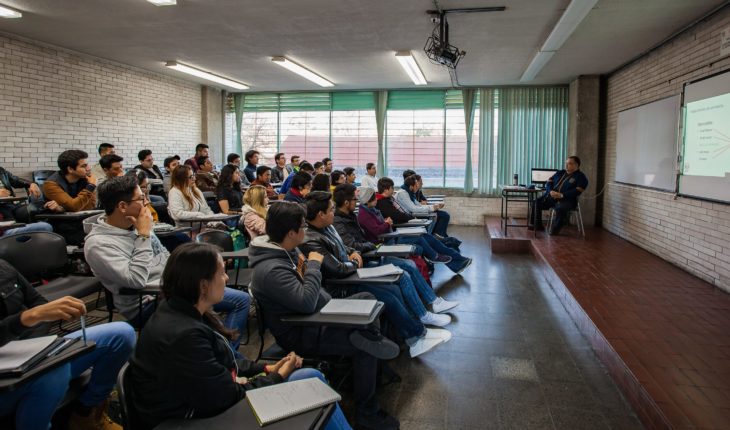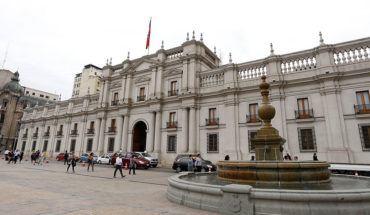Medicine, electronics and environmental sciences, are races better paid currently in Mexico, while music, teacher training and work and social care are the worst salary.
The above can be found in the ComparaCarreras.org of the Mexican Institute for competitiveness (IMCO) tool, which analyzes every year what how viable is to study a degree in our country, and what are the best options.
According to the analysis of IMCO “go to College still is profitable for students, but among the various races, there are differences to be taken into account at the time of choosing”.
Read: Go to College is as important as before
Tool catalog to the following races such as excellent investment, with a performance of “High” and “Low” risk:
Electronics and automation. Average salary: $15,109 | Recovery of investment: 42 months at the private University.
Accounting and auditing. Average salary: $13,357 | Recovery of investment: 31 months at the private University.
Sciences of education, multidisciplinary or general programmes. Wage average: $11,277 | Return on investment: 27 months at the private University.
While, the careers that are considered as very unsafe investments, with a “Low” performance, and a “High” risk are:
Audio-visual techniques and media production. Average salary: $8,973 | Recovery of investment: 57 months at the private University.
Music and performing arts. Average salary: $8,385 | Recovery of investment: 67 months at the private University.
Therapy and rehabilitation. Average salary: $8,639 | Recovery of investment: 84 months at the private University.
Each year, according to the IMCO, more Mexicans graduate from the University, while the benefits of higher education have declined, for example, a graduate went on earn, on average, 88% more than a Bachelor’s degree in 2008, 72% in 2018.
#SemáforoEconómico: 52% of Mexicans working in the informal economy; the South, the most affected States
However, today, to study a Bachelor of reduces by 50% likely to be employed in the informal sector, with respect to the high school.
10 races with lower wages are:
Music and performing arts.
Teacher education for other educational services.
Labour and social care.
Therapy and rehabilitation.
Teacher training for pre-school and basic education.
Audio-visual techniques and media production.
Teacher training, General or multidisciplinary programs.
Stomatology and dentistry.
Guidance and educational counseling.
Economy.
10 careers with better salary are:
Medicine.
Electronics and automation.
Environmental Sciences.
Marketing and advertising.
Business and commerce.
Accounting and auditing.
Math.
Construction and civil engineering.
Mechanical and metallurgical engineering.
Engineering industrial, mechanical, electronics and technology, multidisciplinary programs.
They are found between races with greater informality:
Therapy and rehabilitation; media production; music; history; foreign languages; literature; architecture; agricultural production, and communication and journalism.
And the minor informality degrees are: teacher training for basic education level secondary and primary level; Education Sciences; Finance; Electronics; Biology; business, and teacher training for multidisciplinary programmes.
Read: do you want to have a great salary? Take advantage of any of these 10 bachelor degrees
Careers with more popularity, i.e. with more professionals are: Administration; accounting; law; teacher training for basic education, and psychology. Degrees with less professionals are: environmental science; design; history; educational guidance, and mathematics.
Based on figures from the IMCO, of every 100 students who enter primary school, only 53 graduate from high school and can aspire to enter higher education, reason by which the Government of mexico “should prioritize economic investment in the various school stages so it can benefit from more Mexicans, such as preschool and high school”.
If the Government of Mexico plans to invest in higher education, “IMCO proposes:”
Strengthen mechanisms for linkage with the productive sector to promote a greater relevance of the University offer to the specific needs of each region.
Encourage the development of curriculum and the expansion of higher education enrollment based on evidence on the social and labour skills most demanded by the labour market.
Publish statistics of follow-up of graduates of higher education, on a regular basis, using a system approved and transparent”.
Informal traders earn more than professionals: STPS
The Ministry of labour and Social Welfare (STPS) through their “Professional employment trends” study, says that a person of the informal market can win more than 15 thousand dollars a month, with the sale of bottles of water, confectionery or snack in the surroundings of National Palace, little more than a professional graduated from the area of biological sciences in Mexico, in which the best paid race in the country, is medicine, with an average of 13 thousand 812 pesos a month.
In accordance with the Employment Observatory, with data to the fourth quarter of 2018, at the opposite pole of the biological sciences, are racing in the area of Humanities, with a monthly average of 10 thousand 365 pesos and the Bachelor of Arts, with 9 thousand 768 pesos.
Read: If informality is not fought, 2050 Mexico will have an adult population in poverty
Cuauhtemoc Rivera, President of the National Alliance of small traders (ANPEC), reported that the informal economy has even grown during the first five months of the current federal Government.
ANPEC President explained that trade on public highway has gone from being a “survival” activity to a standard “of governance”, because those people would do if they take these jobs when there are no job opportunities and those that exist are” real subempleos”.
He said that the recent increase of 16.21% at the minimum wage level national and 100% on the northern border, little helped to reduce informal in Mexico work, because it is has the record that 52% of economically active residents, work in this sector.
Informality, according to the official, is a commercial activity reported high economic profits to criminal gangs, as informal vendors do not pay taxes and do not comply with any regulation.
Rivera added that a casual seller earns an average of 500 pesos per day, when it is located in the best locations of consumption, while there are formal workers who only earn 100 pesos per day.
The national survey of occupation and employment (ENOE) conducted by the National Institute of statistics and geography (INEGI), revealed that the informal economy represented 30% of the gross domestic product (GDP) during the first quarter of the new Government, which shows a back labor that threatens to rise.
Mexico is also the country where more work per year, with two thousand 225 hours, and that worse paid, according to the Organization for cooperation and economic development (OECD).
With information from Notimex.
Thanks for reading! Help us to continue with our work. How? You can now subscribe to political Animal on Facebook. With your monthly donation, you will receive special content. Find out how to subscribe here. Check our list of frequently asked questions here.
translated from Spanish: These are the races better and worse paid in Mexico
April 29, 2019 |





